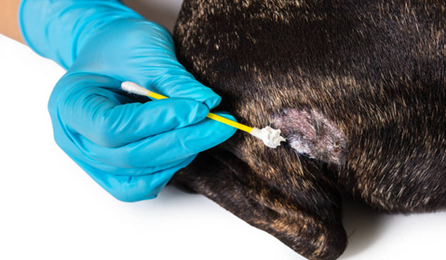The Treatment Effect of Veterinary Laser Therapy on Pets Skin Diseases
Summer is the peak period for pet hospitals to receive animal skin diseases in all seasons. Skin diseases are mainly caused by the following reasons:
l All kinds of insects and parasites are more active in summer.
l Abundant rainfall, which is very suitable for the growth of fungi and bacteria.
l Sunlight exposure to ultraviolet rays increases the lethality.
l The variety of allergens such as all kinds of flowers, plants and pollen in nature has increased.
l Some pet owners mistakenly believe that shaving can cool down pets, and shaving pets eventually leads to pet skin diseases.
The following are some common types of skin diseases in dogs and cats. Skin diseases have always been a headache for pet owners and veterinarians because of their complex conditions, long treatment time, and repeated attacks, including:
l Fungal infections such as cat moss and canine fungal skin disease.
l Bacterial infections such as feline acne, canine pyoderma, and eczema.
l Skin parasitic infections such as ear mites, boil mites, and Demodex mites.
l Parasitic and fungal mixed infection, bacterial and fungal mixed infection, etc.
Laser therapy, also known as Photobiomodulation Therapy, is a type of physical therapy that has been widely used in animal medicine. Its principle is to use a specially designed combination of infrared light and near-infrared light to produce a biological stimulation effect on the lesion tissue, causing a series of beneficial photophysical and photochemical reactions in the tissue, thereby reducing inflammation, reducing pain, and promoting healing. treatment effect. Compared with antibiotics, the anti-inflammatory effect of laser is to stimulate the animal's own immune system without causing antibiotic resistance and side effects. The laser significantly reduces the pain in the affected area of the animal, so that the frequency of licking is greatly reduced, which is beneficial to the recovery of the affected area. The laser promotes tissue healing in the animal's affected area and greatly reduces treatment time.
